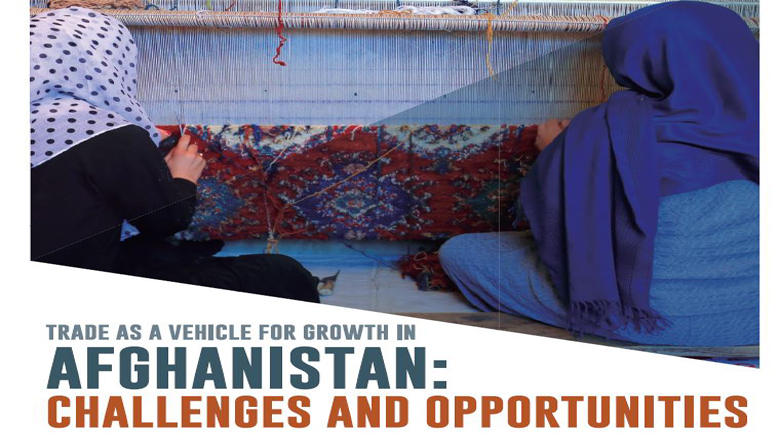With an average annual population growth rate of 3 percent and an estimated 400,000 individuals entering the labor market each year, Afghanistan needs much higher growth rate to improve per capita incomes and to provide quality employment opportunities for the expanding workforce.
Growth has exceeded expectations over the last two years, but remains low because of ongoing insecurity, a decline in foreign aid, and the lack of domestic and foreign investment. With the anticipated normalization of aid levels over the long term, Afghanistan needs to urgently explore new sources for revenue generation and foreign exchange earnings.
While trade and regional integration can help boost Afghanistan’s growth, a new World Bank report, Trade as a Vehicle for Growth in Afghanistan: Challenges and Opportunities, argues that a successful trade strategy needs to take into account the country context and assess risks and opportunities.
Key findings:
- Afghanistan’s largest constraint to trade is insufficient production capacity. Lack of economic diversification and high product concentration further limits Afghanistan’s export potential. Improving competitiveness in high potential sectors such as agriculture will help meet domestic demand, substitute imports, and potentially promote exports in the short and medium-term.
- Poor logistics and trade infrastructure, rather than lack of market access, explain Afghanistan’s trade underperformance. In the short term, exports could be improved by 20 percent by tackling export delays related to customs and border procedures, or high risks during transportation. In the long run, improvements in trade facilitation and logistics coupled with productivity improvements could lead to a more than six-fold increase in exports.
- The potential for services trade is underappreciated. While the export of services is constrained by Afghanistan’s small domestic market size and low human capital endowment, promoting the import of services, and thereby reducing cost, could help overcome current gaps in service delivery.
- Given the security environment, the potential of commodities transit trade might be modest and slow to materialize. Moreover, it would require large investment and strong policy effort to reduce Afghanistan’s distance from the frontier in infrastructure and logistics services. However, the drivers of the currently high transportation cost need to be better understood to design a successful transit trade strategy.
Recommendations:
- Agricultural production growth is constrained by lack of adequate facilities, limited access to high-quality inputs, and insufficient use of research and technology. Irrigated lands can potentially be increased through rehabilitating irrigation systems and investing in new ones, and investing in strong institutions and policies to improve irrigation water management. Efforts should also focus on creating an effective regulatory system and strengthening the capacity of the Ministry of Agriculture, Irrigation and Livestock, as well the existing network of research stations.
- Private sector businesses lack elements of a supportive environment for their operations, new investments, and expansion. Actions to tackle these challenges include reforming the regulatory framework to expand the domestic agroprocessing industry and reduce the time and cost of exporting commodities; providing serviced land facilities in industrial parks and greater access to electricity; and implementing risk-sharing practices, particularly partial credit guarantees, to increase access to finance for the real economy.
- To meet domestic demand, substitute imports, and potentially promote exports, policies should focus on enhancing productivity and promoting investment to expand the scale and quality of agricultural production. Given that government resources are limited, intervention should prioritize development of selected value chains, including irrigated wheat, horticultural crops and livestock production, which have been identified as having the highest potential for development.
